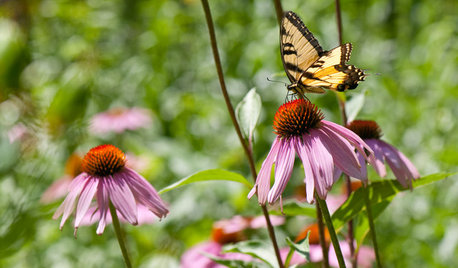Need help with soil test - z6b - Eastern MA
deburn
7 years ago
Related Stories

GARDENING GUIDESHave Acidic Soil in Your Yard? Learn to Love Gardening Anyway
Look to acid-loving plants, like conifers and rhododendrons, to help your low-pH garden thrive
Full Story
GARDENING GUIDESGrow a Beautiful Garden in Alkaline Soil
Got alkaline soil? Learn how to manage it and the many beautiful plants that will thrive in this ‘sweet’ soil
Full Story
GARDENING GUIDESHow to Stop Worrying and Start Loving Clay Soil
Clay has many more benefits than you might imagine
Full Story
GARDENING GUIDESGardening Solutions for Heavy Clay Soils
What’s a gardener to do with soil that’s easily compacted and has poor drainage? Find out here
Full Story
GARDENING GUIDESThe Poop Scoop: Enrich Your Soil With Good Old Manure
Get over the ick factor already — this natural super-ingredient for soil has so many benefits, you'll wonder why you ever went chemical
Full Story
FARM YOUR YARDHow to Get Good Soil for Your Edible Garden
The nutrients in your soil feed the plants that feed you. Here are tips on getting it right — just in time for planting season
Full Story
LANDSCAPE DESIGNHow to Shape a Rain Garden and Create the Right Soil for It
Learn how to grade, lay out and amend the soil in your rain garden to support your plants
Full Story
LANDSCAPE DESIGNFlood-Tolerant Native Trees for Soggy Soil
Swampy sites, floodplains, even standing water ... if you've got a soggy landscape, these trees are for you
Full Story
GARDENING GUIDESInvite Cellophane Bees to Your Garden by Providing Patches of Bare Soil
Look for cellophane bees (Colletes) pollinating flowering trees and shrubs in U.S. gardens this spring
Full Story
GARDENING GUIDESEntice Eastern Tiger Swallowtails With Summer Flowers
Grow nectar-rich native bloomers and larval host plants for these endearing butterflies
Full Story




glib
deburnOriginal Author
Related Discussions
Soil test results - help with fert rec.
Q
Fall plant swap in eastern MA???
Q
Help with soil test report in the Boston area
Q
Partial Eastern MA Lawn Renovation
Q
kimmq
deburnOriginal Author
deburnOriginal Author
deburnOriginal Author
waynedanielson
rgreen48
deburnOriginal Author
rgreen48
kimmq
waynedanielson
deburnOriginal Author
deburnOriginal Author
waynedanielson
User
deburnOriginal Author
User
deburnOriginal Author
kimmq
rgreen48
User
deburnOriginal Author
kokopellifivea
rgreen48
User
John Donovan
deburnOriginal Author
deburnOriginal Author
John Donovan
toxcrusadr
deburnOriginal Author
rgreen48
toxcrusadr
deburnOriginal Author
toxcrusadr